The key to scoring consistently in darts boils down to one crucial thing: improve darts aim. This means refining your stance, grip, throw, and mental game to achieve pinpoint accuracy. This article will guide you through practical techniques and expert tips to enhance your dart throwing skills and consistently hit your target.
⚠️ Still Using Pen & Paper (or a Chalkboard)?! ⚠️
Step into the future! The Dart Counter App handles all the scoring, suggests checkouts, and tracks your stats automatically. It's easier than you think!
Try the Smart Dart Counter App FREE!Ready for an upgrade? Click above!
Mastering the Fundamentals to Improve Darts Aim
Before attempting advanced techniques, it’s essential to solidify your foundation. A strong foundation in darts encompasses several key elements:
- Stance: Your stance provides the base for your throw. A stable and balanced stance is paramount.
- Grip: The grip is your point of contact with the dart. A consistent grip translates to consistent throws.
- Alignment: Proper alignment ensures that your body is oriented correctly towards the target.
- Throwing Motion: A smooth and repeatable throwing motion is crucial for accuracy.
Let’s delve into each of these elements in detail.
Perfecting Your Stance
There are three primary stances in darts: the frontal stance, the side stance, and the open stance. The best stance for you will depend on your personal preference and body mechanics. Experiment to find what feels most comfortable and natural. Here’s a breakdown:
- Frontal Stance: Feet are directly facing the dartboard. Offers a solid base, but can restrict arm movement.
- Side Stance: Body is perpendicular to the dartboard. Provides maximum arm freedom, but requires more balance.
- Open Stance: A hybrid approach, with the lead foot angled towards the board. Offers a balance of stability and arm movement.
Regardless of your chosen stance, ensure that your weight is evenly distributed and that you feel balanced. Avoid leaning too far forward or backward, as this can disrupt your throw. You can find a suitable dartboard set to practice your stance.
The Importance of a Consistent Grip
Your grip is the crucial link between you and the dart. Consistency is key here. Once you find a grip that feels comfortable and secure, stick with it. Avoid changing your grip frequently, as this will negatively impact your accuracy. Common grip styles include:
- Two-Finger Grip: Simple and intuitive, ideal for beginners.
- Three-Finger Grip: Offers more control and stability.
- Four-Finger Grip: Provides maximum control, but can be more difficult to master.
The pressure you apply to the dart is also crucial. Grip the dart firmly enough to maintain control, but not so tightly that you restrict your wrist movement. A relaxed grip allows for a smoother, more natural throw. Don’t apply too much dart point in hindi pressure on the dart.
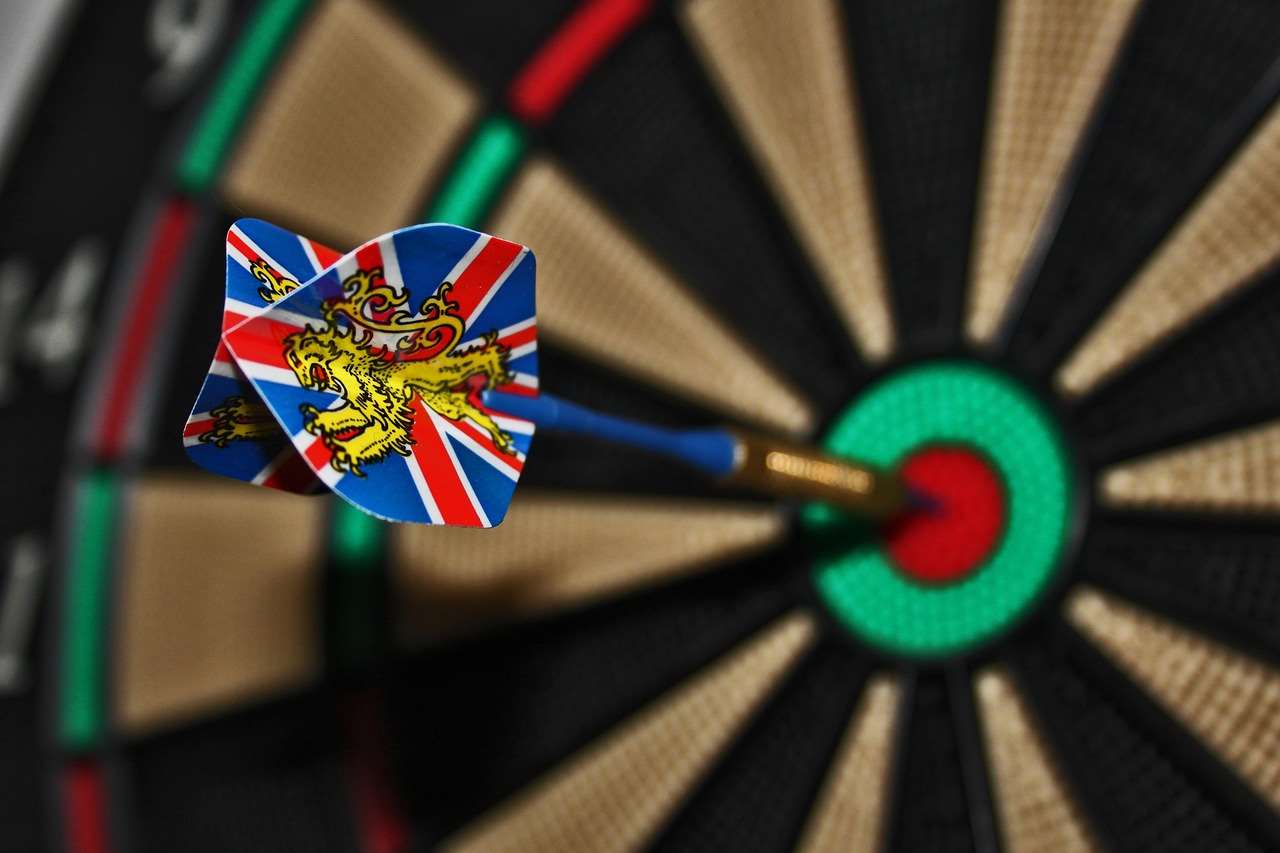
Refining Your Throwing Technique
The throwing motion is where all your preparation comes together. A smooth, repeatable throwing motion is essential for improve darts aim and consistency. Break down your throw into distinct phases:
- The Setup: Align your body, focus on the target, and bring the dart to your eye level.
- The Drawback: Smoothly bring the dart back, keeping your elbow high and your wrist cocked.
- The Forward Motion: Accelerate the dart towards the target, extending your arm fully and releasing the dart at the optimal point.
- The Follow-Through: Maintain your arm extension after releasing the dart. This helps to ensure accuracy and consistency.
Remember to keep your elbow stable throughout the throwing motion. Avoid letting your elbow drift up or down, as this will affect the trajectory of the dart. Visualize your target and focus on hitting it with each throw. Try to hit the single double triple darts sections.
Maintaining a Smooth Release
The release point is critical for accuracy. Aim for a clean and consistent release every time. Practice releasing the dart at the same point in your throwing motion, just as your arm reaches full extension. Avoid snatching or jerking the dart at the release. A smooth release allows the dart to fly straight and true. Consistent practice will help you develop the muscle memory necessary for a consistent release. Consider using a darts garden game for practice.
The Importance of Follow-Through
The follow-through is an often-overlooked, yet essential part of the throwing motion. Maintaining your arm extension after releasing the dart helps to ensure accuracy and consistency. A good follow-through indicates that you have completed your throw smoothly and completely. Visualize your hand reaching towards the target after the dart has been released. A complete follow-through prevents you from cutting your throw short, which can lead to inaccurate shots.
Targeting Strategies for Darts
Choosing the right targets and developing a strategic approach is just as important as perfecting your throwing technique. Don’t just aimlessly throw darts; have a plan. Understanding target selection and strategy is vital to improve darts aim in a competitive setting. Understanding the best 180 darts best strategies will help you improve your game.
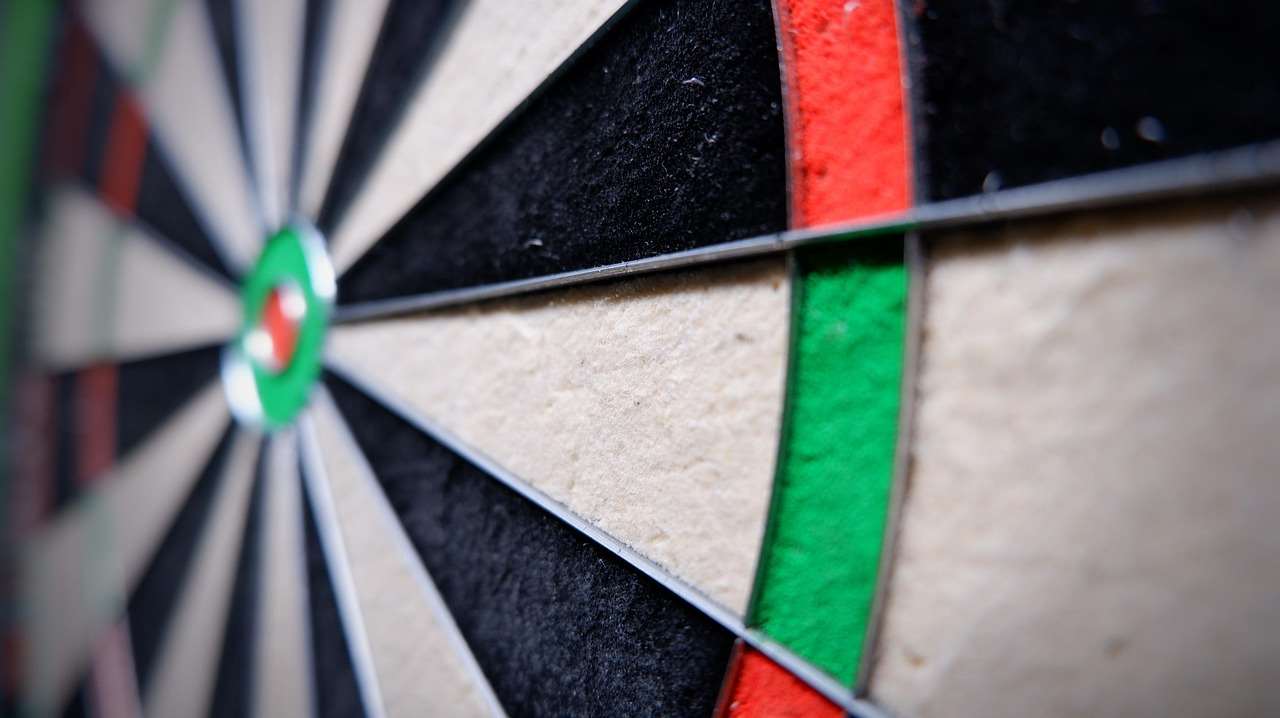
Understanding the Dartboard Layout
Familiarize yourself with the layout of the dartboard. Know the value of each segment, the location of the doubles and trebles, and the strategic importance of different areas. The 20 segment is the highest scoring area, but it’s also a popular target, making it a high-pressure zone. Other strategic targets include the 19 and 18 segments, which offer a balance of scoring potential and lower pressure.
Strategic Target Selection
Choose your targets based on your skill level, the current score, and your opponent’s strategy. When starting a game, focus on hitting the larger, easier targets, such as the 20, 19, or 18 segments. As your skill improves, you can start aiming for the trebles and doubles. When closing out a game, prioritize hitting the doubles, as this is the only way to finish. Remember the darts oche height for your throw.
Developing a Checkout Strategy
A solid checkout strategy is essential for winning games. Learn common checkout combinations and practice them regularly. A checkout is the final series of throws needed to reduce your score to zero, typically ending on a double. Many apps are available to help with checkout suggestions (including the one that can be found here: Free dart score app). These apps provide suggestions based on your remaining score and the best possible combinations. Knowing these combinations can significantly improve your chances of winning.
Mental Game and Focus
Darts is as much a mental game as it is a physical one. Maintaining focus, managing pressure, and building confidence are crucial for consistent performance. Mental toughness allows you to improve darts aim even under pressure.
Staying Focused Under Pressure
Learn to block out distractions and stay focused on the task at hand. Practice visualization techniques to mentally rehearse your throws and build confidence. Before each throw, take a deep breath, visualize the dart hitting the target, and focus on executing your throwing motion. If you miss a shot, don’t dwell on it. Acknowledge it, learn from it, and move on to the next throw.
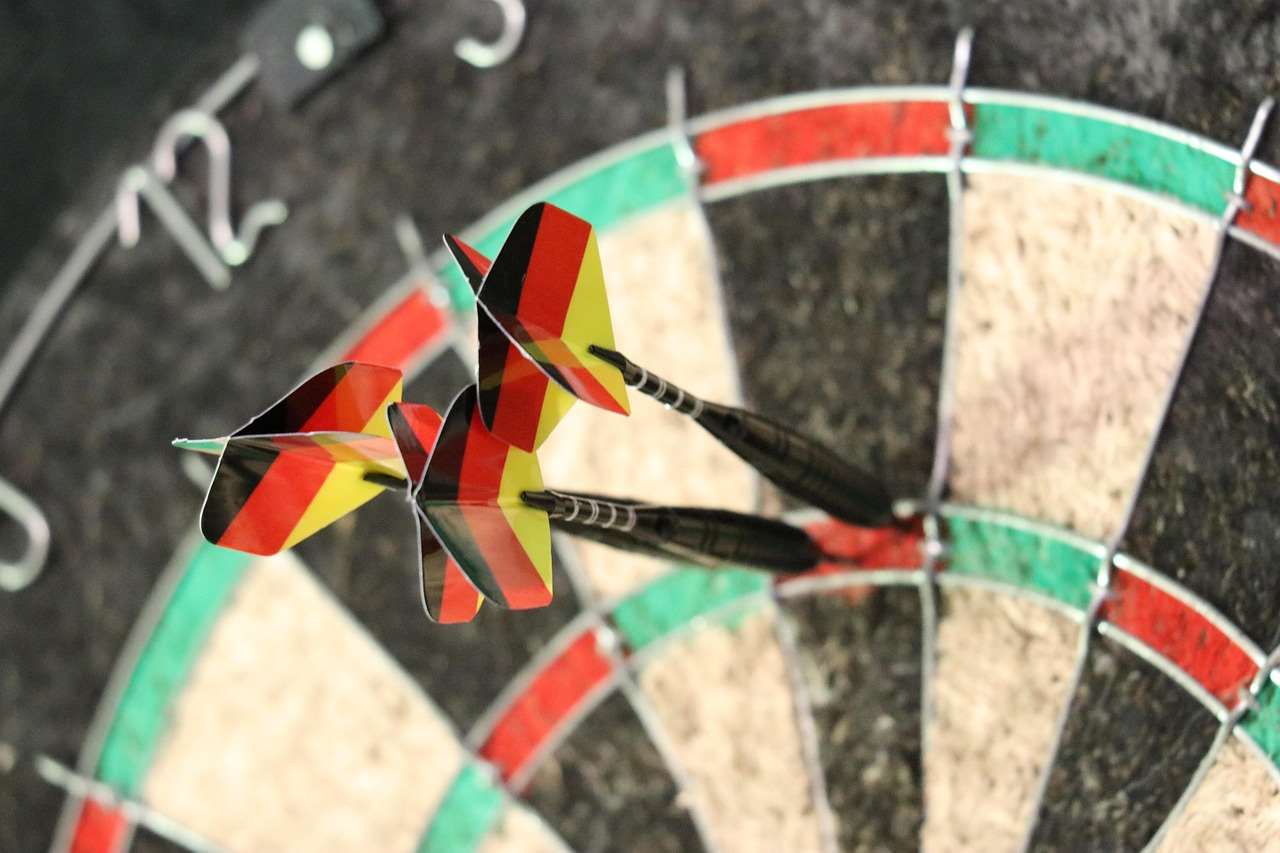
Building Confidence Through Practice
Consistent practice is the key to building confidence. The more you practice, the more comfortable and confident you will become in your abilities. Set realistic goals for yourself and track your progress. Celebrate your successes, no matter how small. Positive reinforcement will help you stay motivated and build confidence. You can darts match length by using a dartboard.
Managing Nerves and Anxiety
Nerves and anxiety are common in competitive situations. Learn to manage these emotions by using relaxation techniques, such as deep breathing or meditation. Before a match, take some time to relax and visualize yourself performing well. During the match, focus on your breathing and stay present in the moment. Remember to stay calm during a darts cricket bull game.
Equipment and Dart Customization
The right equipment can make a significant difference in your performance. Experiment with different types of darts, shafts, and flights to find what works best for you. Customizing your equipment can help you improve darts aim and feel more comfortable at the oche. Also, consider ways to reduce dartboard noise.
Choosing the Right Darts
Darts come in various weights, shapes, and materials. Experiment with different types of darts to find what feels most comfortable and allows you to throw consistently. Heavier darts tend to be more stable in flight, while lighter darts can be easier to control. The shape of the dart can also affect its flight characteristics. Choose a dart that suits your throwing style and grip.
Selecting Shafts and Flights
Shafts and flights play a crucial role in the aerodynamics of the dart. Experiment with different lengths and shapes of shafts to find what provides the best stability and accuracy. Longer shafts tend to increase stability, while shorter shafts can improve maneuverability. Flights also come in various shapes and sizes, each affecting the dart’s flight characteristics. Larger flights provide more stability, while smaller flights offer less drag. Also, consider using a dart double linked list for practice.
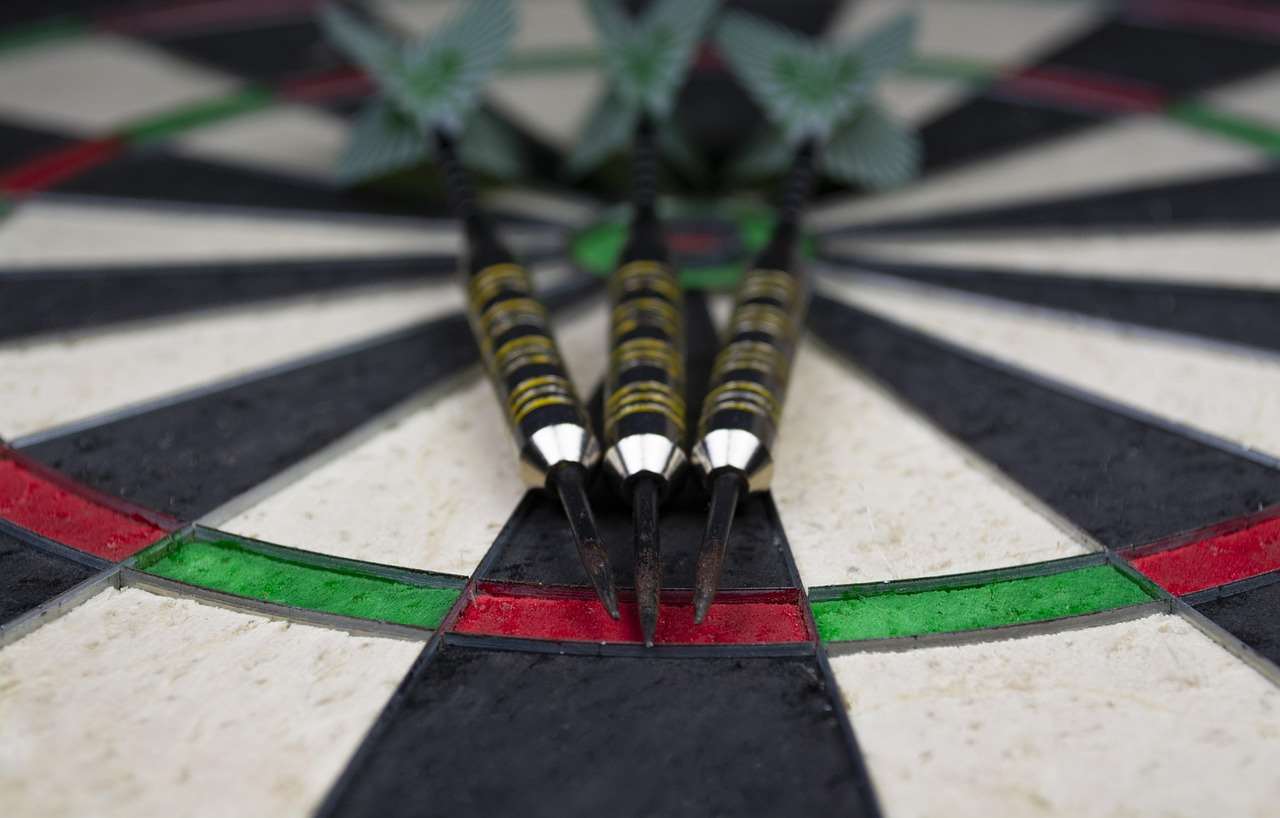
Maintaining Your Equipment
Regularly clean your darts to remove dirt and grime, which can affect your grip and throw. Sharpen your dart points to ensure they stick in the dartboard. Replace worn shafts and flights to maintain optimal performance. Proper maintenance will help you prolong the life of your equipment and maintain consistent accuracy.
Practice Drills to Enhance Accuracy
Targeted practice drills are essential for improving your accuracy and consistency. Focus on specific areas of the dartboard and track your progress. Consistent drills are vital to improve darts aim effectively.
The Around the Clock Drill
Start by aiming for the 1 segment, then the 2 segment, and so on, all the way around the dartboard. This drill helps you improve your accuracy and consistency on all areas of the board. Try to hit each segment with three darts before moving on to the next. You can also modify this drill by aiming for the doubles or trebles.
The 20s and Bullseye Drill
Alternate between aiming for the 20 segment and the bullseye. This drill helps you improve your accuracy on the two most important areas of the dartboard. Try to hit the 20 segment and the bullseye consistently with three darts each before taking a break.
The Checkout Drill
Practice common checkout combinations by starting with a specific score and trying to finish on a double. This drill helps you improve your checkout strategy and accuracy under pressure. Use a checkout chart or app to guide you through the most efficient combinations.
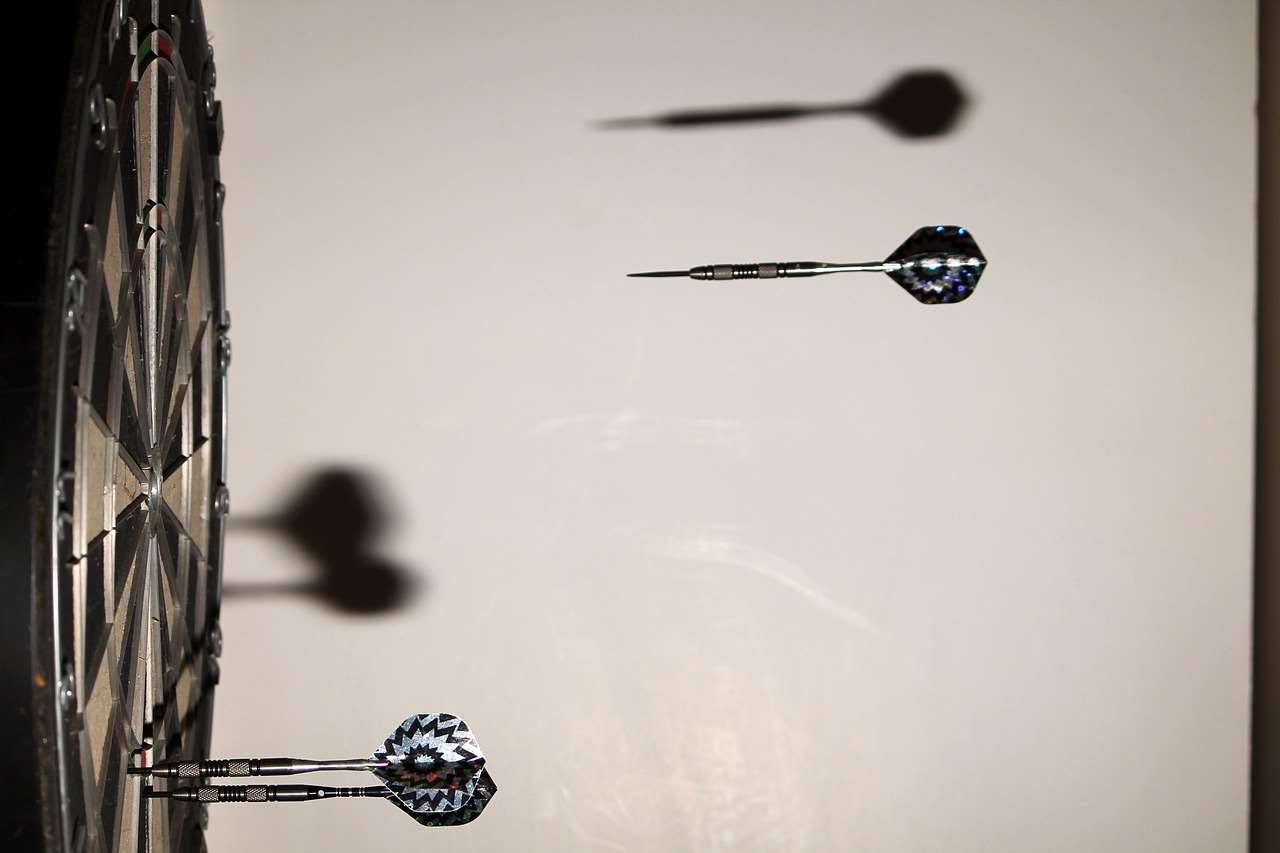
Conclusion
Improving your darts aim requires a combination of mastering the fundamentals, refining your throwing technique, developing a strategic approach, and cultivating a strong mental game. By focusing on these key areas and consistently practicing, you can significantly enhance your dart throwing skills and achieve greater accuracy and consistency. Remember, patience and persistence are key. Keep practicing, stay focused, and you will see improvement over time. So, grab your darts, implement these tips, and start practicing! Your journey to improve darts aim begins now. Visit our website to learn more about darts tips and resources!
Hi, I’m Dieter, and I created Dartcounter (Dartcounterapp.com). My motivation wasn’t being a darts expert – quite the opposite! When I first started playing, I loved the game but found keeping accurate scores and tracking stats difficult and distracting.
I figured I couldn’t be the only one struggling with this. So, I decided to build a solution: an easy-to-use application that everyone, no matter their experience level, could use to manage scoring effortlessly.
My goal for Dartcounter was simple: let the app handle the numbers – the scoring, the averages, the stats, even checkout suggestions – so players could focus purely on their throw and enjoying the game. It began as a way to solve my own beginner’s problem, and I’m thrilled it has grown into a helpful tool for the wider darts community.